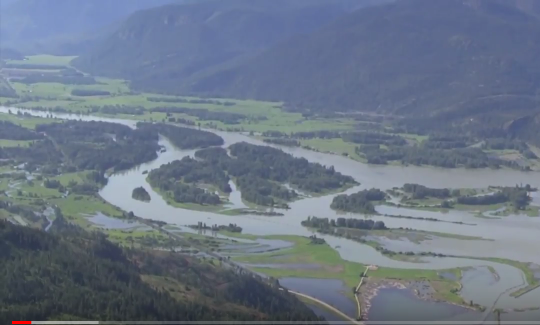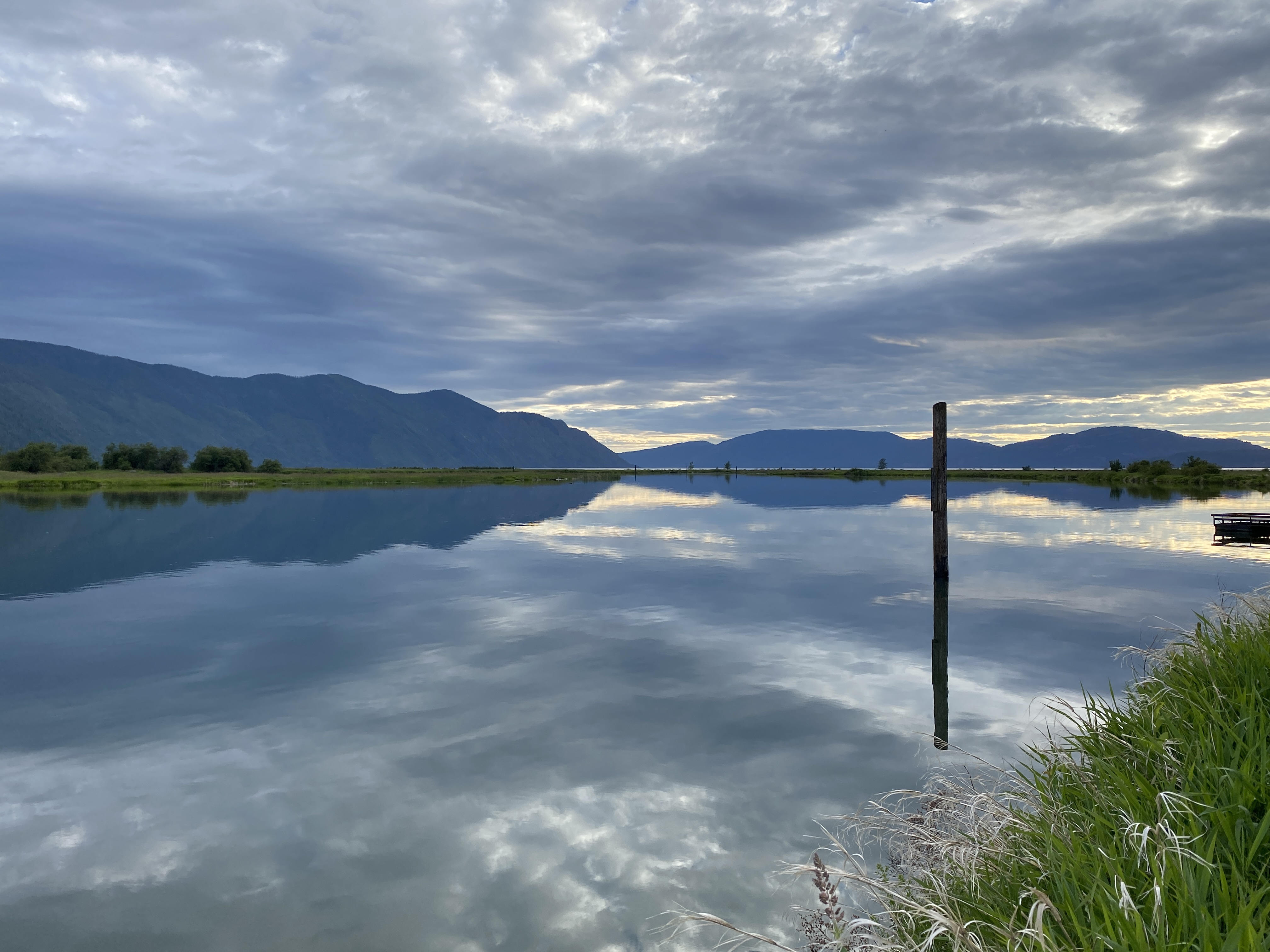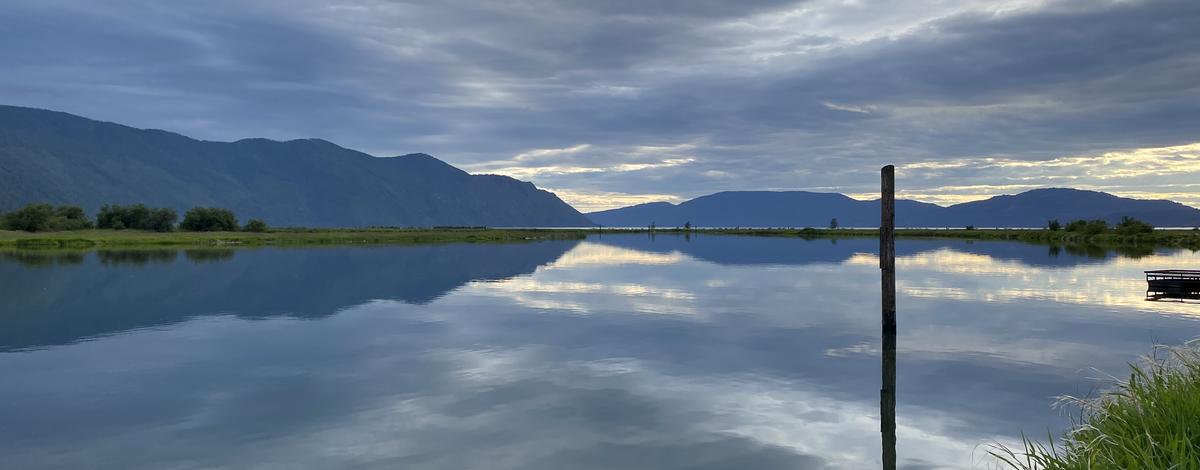Delta Birds
Idaho Fish and Game collaborated with the Intermountain Bird Observatory to conduct bird surveys on the Pack River and Clark Fork River deltas in June 2021. The observatory has been working in the Albeni Falls Dam wildlife mitigation areas since 2014 to better understand the different bird species and their numbers in the areas. Documenting the numbers of birds and the different species helps managers understand how effective different habitat projects have been.
A total of 93 bird species were observed in 2021, with six of the species not found in previous surveys. Lewis’s woodpecker, a newly recorded species observed on the Pack River Delta, is considered to be in population decline due to loss of cavity nesting habitats. Hairy woodpeckers were recorded in several places on the Clark Fork Delta. Continued presence of those species may point towards an increase in suitable cavity nesting habitats; though at this early stage of restoration, a suitable suite of cover and improved feeding opportunity is more likely.
In the Johnson Creek area, whose confluence with the Clark Fork River defines the southern end of its delta, clay-colored sparrows were recorded as a new species. These are not commonly known to be in the panhandle of Idaho, indicating possible range expansion or a wandering individual. The acrobatic, insectivorous cliff swallows and lively but secretive marsh wrens were also new additions to the observed species list. Both species often use wetlands and waterways in the western United States.
Compared to previous years, data collected in 2021 showed an increase in individuals of the most abundant species. These include song sparrow, cedar waxwing, yellow warbler, Canada goose and willow flycatchers. The three latter species and 16 others detected in the surveys often use riparian and wetland habitats during breeding season, and all benefit greatly from relatively intact, healthy ecosystems.
Monitoring how different bird species respond to restoration efforts helps managers better plan projects for wildlife, their habitat and the people of Idaho. Birdwatching is a popular hobby among many folks in Idaho, and restoration efforts such as those on the Clark Fork Delta provide great birdwatching opportunities.

Poring Over Plants
Other efforts undertaken this summer on the Clark Fork Delta included vegetation surveys. The surveys initially began in 2015 as the first phase of the Clark Fork Delta restoration began in order to provide a baseline inventory of native vegetation planted document how the plant community might change over time.
Transects for willow density were performed on constructed rock breakwaters in the delta to determine how well planted willows established. Successful willow establishment on shorelines improves wildlife feeding opportunities and reinforces breakwater structures built to reduce erosive wave impact on the delta islands.
Presence surveys for reed canarygrass were performed to determine if control methods are effectively reducing the highly invasive, non-native species. The surveys also identified areas where further control efforts are needed to suppress reed canarygrass, a plant that severely limits wetland plant diversity.
Surveys were done to document all plant species present on delta islands. Surveys to document plant canopy cover indicated progress in emergent vegetation establishment near delta island shorelines and marsh areas.
Plants found on the delta included native willow species, cottonwood, rushes and sedges, forbs and grasses, all of which provide diverse wildlife forage, cover and pollinator habitat. Many of the species were planted from previous years indicating that planting efforts are effectively reestablishing plant communities on the remaining delta islands.

Continued plant monitoring is important for measuring restoration success and informing future efforts. A prime example was the documentation and immediate removal of a small patch of the highly invasive, non-native wetland plant phragmites, or common reed. Unfortunately this introduced plant is commonly found in the Coeur d’Alene River watershed, where it readily out-competes native wetland plants and forms dense stands that are nearly useless to most Idaho wildlife. Presence of phragmites in the lower Clark Fork River and Lake Pend Oreille so far is extremely rare, and suppression efforts of any stands discovered should be immediate and complete to help ensure native wetland productivity into the future.
Additional habitat work performed in 2021 included noxious weed spraying and mechanical weed removal on the islands. These active management actions are vital to establishing healthy plant communities. Active management and long-term monitoring will continue to occur on past and future phases of the Clark Fork Delta restoration project as part of Fish and Game’s commitment to improving wildlife habitat in the region.
-Amber LeBlanc, Wildlife Technician
-Evan DeHamer, Mitigation Staff Biologist
For more information, check out Restoring the Clark Fork Delta press release, video and website
Please call the Panhandle Regional office at (208) 769-1414 with any questions. Follow the Panhandle Regional Facebook page for regular news and updates.

